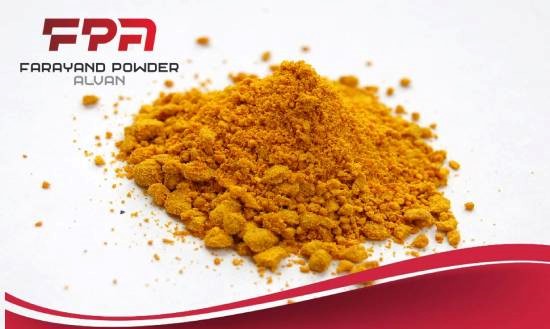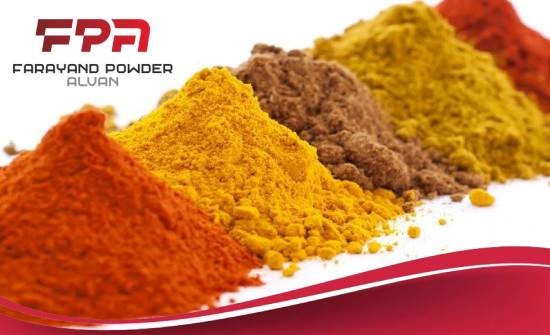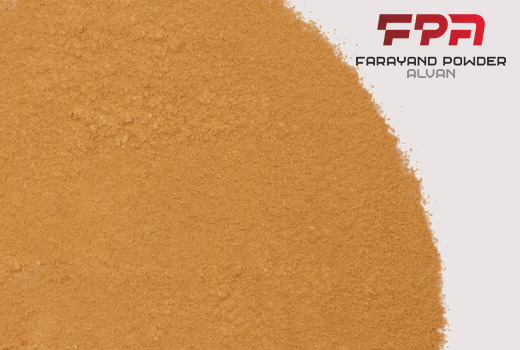Natural Yellow Iron Oxide is formed through a complex interplay of geological processes. It originates as iron minerals in sedimentary rocks, undergoing transformation due to chemical reactions and exposure to environmental factors over millions of years. These processes imbue the iron with its distinct yellow hue. Stay with us in the rest of this article to check the necessary information about this material for us.
Natural yellow iron oxide formula
natural yellow iron oxide formula is also important. Goethite, also known as natural yellow iron oxide, is a distinct yellow to brownish-yellow mineral. It is composed of iron (Fe), oxygen (O), and hydrogen (H). This mineral is formed when materials rich in iron are oxidized and is commonly found in various geological settings, including sedimentary rocks, bogs, and soils. Goethite is typically created when iron-bearing minerals are weathered and plays a significant role in the formation of ochre deposits.

Natural yellow iron oxide benefits
Pigment for Art and Design
Natural yellow iron oxide is a popular choice among artists and designers for its warm, vibrant yellow colour. It has been used in painting, ceramics, textiles, and various design applications to create beautiful, earthy tones.
Non-toxic and Environmentally Friendly
Yellow iron oxide is a non-toxic and environmentally friendly pigment. It doesn't pose health risks during its use or disposal, making it a safe choice for artists, manufacturers, and consumers.
UV Resistance
It is highly resistant to ultraviolet (UV) light, making it a durable choice for outdoor applications. This property ensures that the colour remains vibrant and doesn't fade when exposed to sunlight, which is particularly important for architectural coatings and outdoor art installations.
Corrosion Protection
In the construction industry, natural yellow iron oxide is used in protective coatings for steel structures. It helps prevent corrosion by acting as a barrier against moisture and oxygen, extending the life of buildings and infrastructure.
Safe for Skin and Cosmetics
Natural yellow iron oxide is often used in cosmetics and personal care products, such as makeup and skincare, due to its non-toxic nature. It provides a safe option for adding colour to these products.

Applications of Natural Yellow Iron Oxide
Natural yellow iron oxide, also known as yellow ochre, is a versatile and widely used pigment with a rich history dating back to prehistoric times. Its distinctive yellow colour, derived from iron oxide minerals, makes it valuable in various industries and applications. In this article, we will explore the diverse natural yellow iron oxide uses. We have Uses of natural yellow iron oxide in industry and Uses of natural yellow iron oxide in daily life.
Art and Pigments
Natural yellow iron oxide is a popular pigment in the art world. Artists use it to create a wide range of yellow hues, from soft ochre shades to vibrant yellows, which can be found in paintings, murals, and various art mediums.
Construction
It is used in construction as a colourant for cement, concrete, stucco, and mortar. This not only provides a pleasing appearance but also enhances the durability of the structures.
Ceramics
In the ceramics industry, yellow iron oxide is used as a colouring agent for glazes and pottery. It imparts a warm, earthy tone to the finished products.
Cosmetics
Natural yellow iron oxide is utilized in the cosmetic industry to produce a wide range of makeup products, including eyeshadows, foundations, and lipsticks.
Plastics and Polymers
It is employed as a colourant in plastics and polymers to achieve the desired yellow or brownish tints in various plastic products.
Dye Production
In the textile industry, yellow iron oxide is used to dye fabrics and textiles. It helps achieve different shades of yellow and brown, and it is trendy in the production of earth-toned clothing.
Paints and Coatings
It is a key ingredient in the manufacturing of paints and coatings, contributing to the longevity and vibrancy of the finished products. It is commonly used in both interior and exterior paints.

The side effects of using natural yellow iron oxide
After knowing the answer to the question "What is natural yellow iron oxide?" and checking the various factors for natural yellow iron oxide uses, we need to know whether the use of natural yellow iron oxide causes harm to the body or not.
"What is yellow iron oxide made of?" As we said before, This common question arises when exploring the composition of pigments. Yellow iron oxide, often used in paints and pigments, is derived from natural minerals such as goethite and limonite, showcasing a chemical makeup that contributes to its vibrant hue and versatile applications. However, there are disadvantages to these compounds, which we will examine below.
Skin Irritation
Natural yellow iron oxide is generally considered safe for skin contact. However, prolonged or repeated exposure may lead to skin irritation in some individuals, particularly those with sensitive skin. It is advisable to use protective equipment such as gloves when handling the pigment in its raw form.
Eye Irritation
Direct contact with the eyes may irritate. In case of eye exposure, it is crucial to rinse the eyes thoroughly with water and seek medical attention if irritation persists. Safety goggles or protective eyewear should be worn when working with natural yellow iron oxide to prevent accidental eye contact.

Inhalation Risks
Inhalation of airborne particles of natural yellow iron oxide should be minimized. While the pigment is not known to be highly toxic, inhaling large quantities of dust can irritate the respiratory system and may cause discomfort. Adequate ventilation and respiratory protection, such as masks, are recommended when airborne exposure is possible.
Ingestion Concerns
Swallowing natural yellow iron oxide is generally not considered a significant health risk. However, it is essential to avoid ingestion as much as possible. Ingesting large quantities may lead to gastrointestinal discomfort; in such cases, medical attention should be sought immediately.
Environmental Impact
The environmental impact of natural yellow iron oxide is generally low. However, the disposal of waste containing the pigment should be done by local regulations to prevent any potential environmental harm. Following proper waste management practices is essential to minimize the impact on ecosystems.
Occupational Exposure Limits
Various occupational health and safety organizations provide exposure limits for different substances, including iron oxide pigments. Workplaces must adhere to these recommended exposure limits to ensure the safety of workers. Monitoring and controlling occupational exposure through engineering controls and personal protective equipment are vital aspects of occupational safety.
Compatibility with Other Materials
Natural yellow iron oxide may react with certain materials or chemicals under specific conditions. Compatibility testing should be conducted when incorporating the pigment into formulations to ensure stability and prevent unwanted reactions that could lead to the release of harmful substances.
Potential Allergic Reactions
While rare, some individuals may be allergic to natural yellow iron oxide. To identify potential allergic responses, it is advisable to perform patch tests on a small skin area before extensive use, especially in cosmetic or personal care products.
Regulatory Compliance
Users should know and comply with relevant regulations and guidelines about using natural yellow iron oxide in their applications. Regulatory requirements may vary by region, and adherence to these standards is essential for ensuring the safe and legal use of the pigment.

Composition and Properties of Natural Yellow Iron Oxide
How to make yellow iron oxide is also vital for many industries. In a separate container, prepare a sodium hydroxide solution by dissolving sodium hydroxide pellets in water. Gradually add the sodium hydroxide solution to the ferrous sulfate solution while stirring continuously until a yellow precipitate forms.
The precipitate is the yellow iron oxide. Carefully decant and wash the precipitate several times with water to remove any impurities, and then allow it to dry. Once dry, you'll have your yellow iron oxide pigment, which can be used in various applications, including pigments and colourants. Exercise caution and follow safety protocols when handling these chemicals.
With more than three decades of expertise in manufacturing a wide range of industrial micronized powders and a seasoned team well-versed in pigments, Farayand Powder Alvan Co. stands as a respected supplier across diverse industries. They take pride in offering customers expert technical guidance to secure the finest and most cost-effective solutions.


